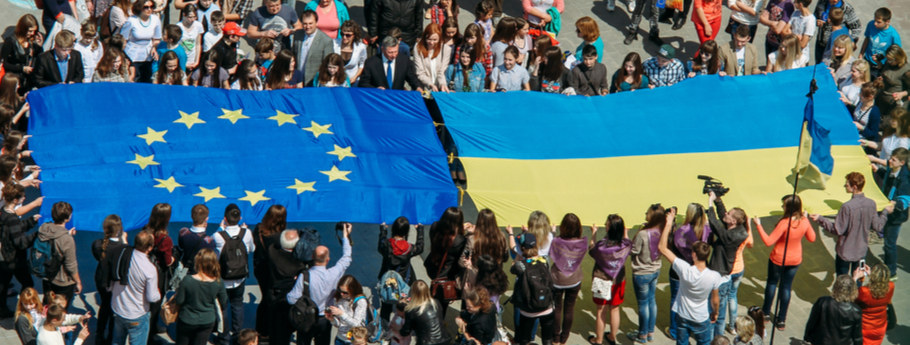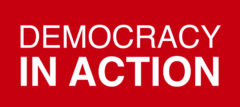
On 24 February 2022, Ukraine’s ambassador in Germany Andriy Melnyk spoke to Germany’s finance minister Christian Lindner in what would turn out to be one of the toughest conversations of his life. It was the first day of Russia’s unprovoked and brutal war against Ukraine, and Linder expressed his doubts to Melnyk about supplying weapons, as he believed that Kyiv would fall in just a matter of days.
Why was Lindner – along with many others, not only in the West – so convinced that Russia would score a swift victory? Was it down to the apparent size and superiority of Russian military power, as demonstrated by numerous lavish military parades, or was it due to a lack of trust in Ukraine’s political and military leadership?
Ukrainian resistance and changing expectations
Whatever the answer, the strength of Ukraine’s resistance has dramatically changed not only the West’s expectations about the outcome of the war, but broader perceptions of the country and its citizens. As European Commission president Ursula von den Leyen announced just four days after Melnyk’s conversation with Linder, “Ukraine is one of us and we want them in the European Union”. Ukraine went on to submit an official request to join the EU that very same day, then, on 9 May 2022, announced it had completed the questionnaire that would enable the European Commission to assess the country’s membership criteria compliance.
Should a positive assessment be given, the Commission can recommend to member states that Ukraine become an EU ‘candidate country’. The questionnaire is structured according to the ‘Copenhagen criteria’, which cover the essential conditions candidate countries must satisfy, namely: stable democratic institutions, a functioning market economy and the capacity to implement EU legislation.
The impact of the war on Ukraine’s economy has been severe, with the World Bank forecasting a dramatic 45% fall in GDP by the end of 2022. Significant resources will be required to rebuild infrastructure and housing. Ukraine’s progress in adapting its legislation to EU law has been uneven, with the lowest compliance rates seen in the areas of financial cooperation, customs and consumer protection.
Some member states, such as France and Austria, have argued that it will take years (or even decades) for Ukraine to become an EU member. Others, such as Poland, Slovenia and Lithuania, have advocated strongly for Ukraine to be placed on a more timely track to EU membership.
Three revolutions
Amid this debate, there is one criterion where the country’s readiness to join the EU is not in doubt – that related to democratic institutions. Since the 1990s, Ukraine’s commitment to freedom and democracy has manifested in three revolutions: the 1990 Revolution on Granite, the 2004–2005 Orange Revolution and the 2013–14 Revolution of Dignity (widely known as the ‘Euromaidan’).
Though these revolutions occurred under varying historical circumstances, they share a couple of key features. In all cases the protests began in Kyiv’s Maidan Nezalezhnosti (literally translated as ‘Independence Square’). All three revolutions were successful.
The 1990 Revolution on Granite – which took place when Ukraine was still part of the Soviet Union – led, for the first time in Soviet history, to the resignation of a high-level official under the pressure of public opinion. The revolution is seen by historians as having prefigured further, larger-scale, revolutionary demonstrations.
Fourteen years later, the Orange Revolution was triggered by massive electoral fraud and corruption during the 2004 Ukrainian presidential elections, and ultimately led to the elections being re-run and Victor Yuschchenko being inaugurated as Ukraine’s democratically elected president. Yuschchenko became the first Ukrainian president to officially depart from the post-Soviet ‘multi-vector diplomacy doctrine’, instead emphasising that the country should aim to join the EU and NATO.
Paradoxically, the EU later went on to accelerate its negotiations with Ukraine regarding the Association Agreement and visa-free regime not with the clearly pro-Western Yuschchenko, but with Victor Yanukovych – his opponent in the notorious 2004 presidential elections. The reason for this can perhaps be found in Ukraine’s political stabilisation under Yanukovych in 2010–14, including relatively settled relations with Russia.
Following pressure from Vladimir Putin’s regime – which wanted Ukraine to become part of the Russia-led Customs Union – President Yanukovych refused to sign the EU–Ukraine Association Agreement. This spurred the country’s third revolution: the Euromaidan. This four-month, country-wide stand-off between protesters and state security forces resulted in Yanukovych being forced to resign and the eventual signing of the Association Agreement.
The Association Agreement envisages political association between the EU and Ukraine, as well as trade liberalisation that will eventually lead to Ukraine’s integration into the European Single Market. As such, each of the three revolutions helped teach Ukraine and Ukrainians ‘best practices’ of civic protest against undemocratic processes, and brought the country closer to Europe.
Progress after Euromaidan
This ‘progress through protest’, coupled with reform efforts supported by the EU and other Western donors, has resulted in Ukraine entering each new era of mass mobilisation as a more resilient and confident state. This is especially true for the most recent period, that between the Euromaidan and the 2022 invasion by Russia, with the current war representing, in the eyes of many Ukrainians, a large-scale armed protest by the people against Russia’s imperialist ambitions and planned occupation.
Among the post-Euromaidan changes that have been helpful to Ukraine in opposing the Russian invasion are: successful economic and energy reorientation towards the EU; decentralisation of power and digitalisation of state services; and public finance management and banking sector reforms. This period has also been marked by the proliferation of EU–Ukraine people-to-people, educational and cultural links, fostered by a visa-free regime, and by Ukraine’s participation in Erasmus university exchange programmes, the Horizon Europe research framework, and the Creative Europe cross-border cultural cooperation programme – not to mention a plethora of other partnerships at the local level.
The Euromaidan has provided momentum for the formation of what scholars Samokhvalov and Strelkov call “cross-dimensional networks of democracy promotion”. Such reform support networks comprise high-level diplomats, pro-reform state representatives, bureaucrats involved in EU–Ukraine cooperation, and civil society activists. These scholars identify civil society mobilisation as the key factor behind Ukraine’s reform successes and its resilience in the post-Euromaidan era.
The Euromaidan and the subsequent signing of the Association Agreement were not the only factors behind the mobilisation of Ukrainian civil society, and the creation of triangular cooperation between the state, civil society and international donors. Also crucial was Russia’s 2014 annexation of Crimea and its armed support for the creation of the ‘Donetsk and Luhansk People’s Republics’ in the east of Ukraine. At the time, the Ukrainian state lacked the military and financial capacity to counter Russia’s aggression. This gap was filled by the civilian volunteer movement, which played a critical role in equipping Ukraine’s military units and preventing the expansion of ‘People’s Republics’ territory.
In fact, post-Euromaidan Ukrainian civil society has formed a clear division of labour. Some organisations – such as the Reanimation Package of Reforms Coalition, Euromaidan SOS and the Ukraine Crisis Media Center – have primarily dealt with support for reforms, EU integration and communication. Others have focused on building the capacity of the Ukrainian military and allied action. Among the latter are Come Back Alive, which has supplied technology and training to Ukrainian armed forces, and the Hospitallers volunteer medical battalion, which focuses on medical aid and evacuating wounded soldiers from the battlefield.
Meanwhile, Crimea SOS and Vostok SOS have been engaged in assisting Ukrainians, including internally displaced persons, who have suffered due to Euromaidan protests or armed conflict with Russia. This extends to the monitoring of human rights violations in occupied territories. Civil society and volunteer movements form the basis for Ukrainian self-organisation and resistance to Russia’s occupation.
What next?
It has now been more than three months since Russia’s invasion began. Beyond the formidable military resistance we have already witnessed, Ukrainians are organising peaceful protests in the occupied towns of Kherson and Enerhodar, fundraising to buy drones and thermal imaging tools for the military, and engaging en masse in volunteer movements. Each day of war results in Ukraine paying a heavy price, not only with its citizens’ lives, but also in terms of the economic losses and practical challenges obstructing the path to reform and EU membership. Even so, it seems inevitable that the commitment to freedom and democracy shown by Ukrainians will only grow stronger amid the country’s fourth revolution and first armed protest.
Maryna Rabinovych is a postdoctoral researcher at the Department of Political Science and Management at the University of Agder. She works on the research project “Lowering the Bar? Compliance Negotiations and the EU–Ukraine Association Agreement”, funded by the Research Council of Norway.
The views expressed in this article are those of the author and do not necessarily reflect Democracy In Action’s editorial stance, or the position of any institution or association.
